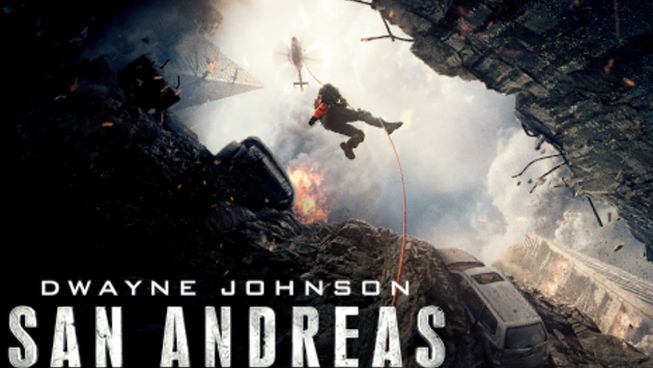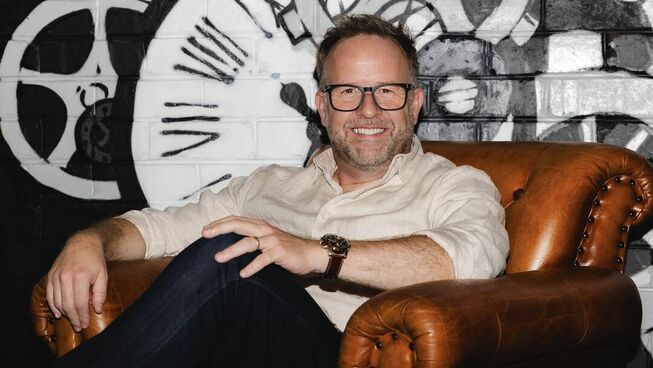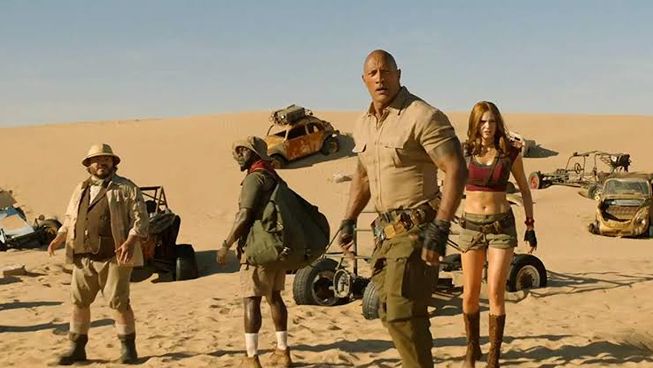
Some disaster movies look like you're watching someone else play video games. They're fun but it's not real. Eli Roth
Walking into the cinema...
The Rock in a disaster film about falling and shifting rocks. Ironic? Get ready to turn off the brain, watch cities be destroyed, have fun and even have a good laugh.
Cinematic rating: 2.5 stars
Reel Dialogue Rating: 2 stars
The Rock in a disaster film about falling and shifting rocks. Ironic? Get ready to turn off the brain, watch cities be destroyed, have fun and even have a good laugh.
Do we need another disaster film? When it comes to escapism, there is nothing like a good disaster film and they seem to be something audiences want to see. Logic and physics need not apply. Script writers take a back seat to the CGI experts.
In the case of San Andreas, something new has been provided. No, it isn’t the on-screen earthquakes, tsunamis, or typical well-timed American flag unfurling. What is new? We get The Rock (Dwayne Johnson) saving the world or, at least, portions of California.
For those unaware, there is a huge fault line caused by tectonic plates along the West Coast of the United States of America. These plates have been the cause of actual earthquakes throughout history and provided storylines for many films. This fault line takes centre stage in San Andreas and is allowed to wreak havoc through many of California’s cities, including Los Angeles and San Francisco.
Even though San Andreas is a multi-regional disaster, the real story is of a man striving to save his family. Ray’s (Johnson) family has been torn apart by tragedy and divorce. However, beyond the personal dramas, he still has to save them from the impending earthquakes.
It may not be an original storyline, but the reasons many will choose to go to the cinema to see San Andreas is to have some fun, possibly a bit of a laugh, and experience the ground-breaking special effects that are expected to come from this genre.
If San Andreas offers anything new to the catastrophic film experience, apart from The Rock, it is the breathtaking sound engineering. It made this movie experience all-encompassing and primal. Interestingly, the sound design helps to add a bizarre emotional component to the story. It allows the audience to feel the impact of the earthquakes and action on a new level.
Beyond the sound design, the rest of this familiar tempestuous tale suffers from its lack of originality. Not that there was a high level of expectation for the script and acting, but the visual experience, albeit grand, is derivative of many other disaster films.
Some of the biggest visual challenges in the wake of the carnage were the unexplained buildings in two world class cities that contained minimal occupants; vehicles with unlimited fuel consumption; and the ‘needle in a hay stack’ search-and-rescue process. Yet, even with these failings, director Brad Peyton (Journey 2: The Mysterious Island) provides the unbelievable and makes it all seem probable through the adrenaline-charged action. Also, the inclusion of the family drama set against the backdrop of a disaster helped provide the film with the needed soul and a reason to care for the characters.
Within the obvious escapist trappings, questions raised by San Andreas get back to the primal considerations of the human experience: survival, salvation, the end of the world and the bond of family. In a year of disaster and dystopian films, it is easy to consider the end of the world passé. But San Andreas goes a step further and provides a glimpse into our need for others, especially family members. In an unbelievable manner, this story shows the lengths people will go to provide care and safety for their family. This small familial nugget provides the gem among the falling rocks of California.
Leaving the cinema
Disaster films rank at the bottom of the list of my preferred genres. Why? Each film has to find different and bigger ways to destroy the world and, in the end, most of these films provide the same results. When it comes to San Andreas, it does not break new ground, but even though it was ridiculous, it was fun and provided an enjoyable cinematic escape.
Reel Dialogue: What are the bigger questions to consider from this film?
1. What does the future hold?
2. Can we solve our own problems?
3. Why do we need a saviour?
Russell Matthews works for City Bible Forum, Sydney and you can find more reviews on Russelling Reviews and in Insights Magazine





